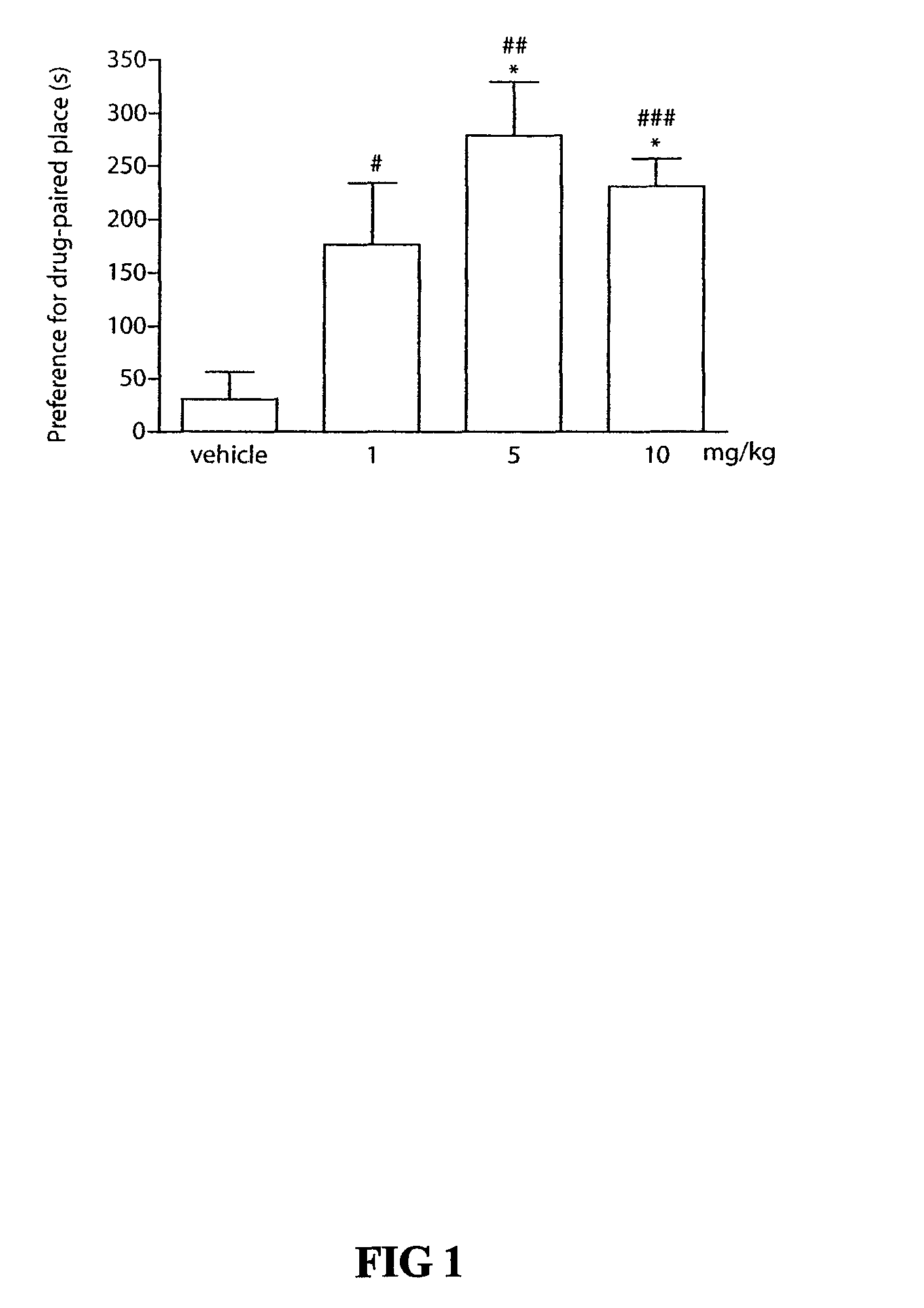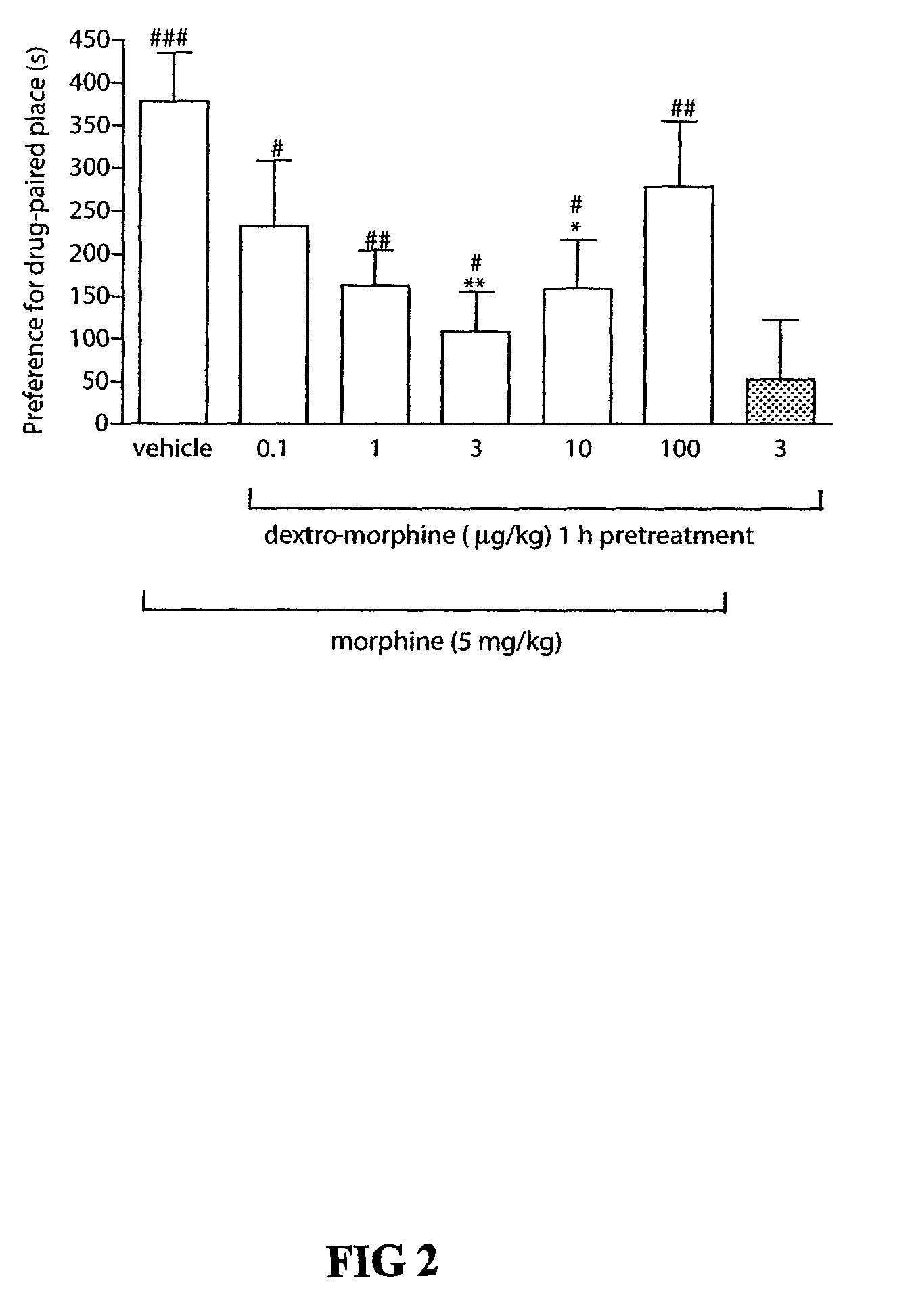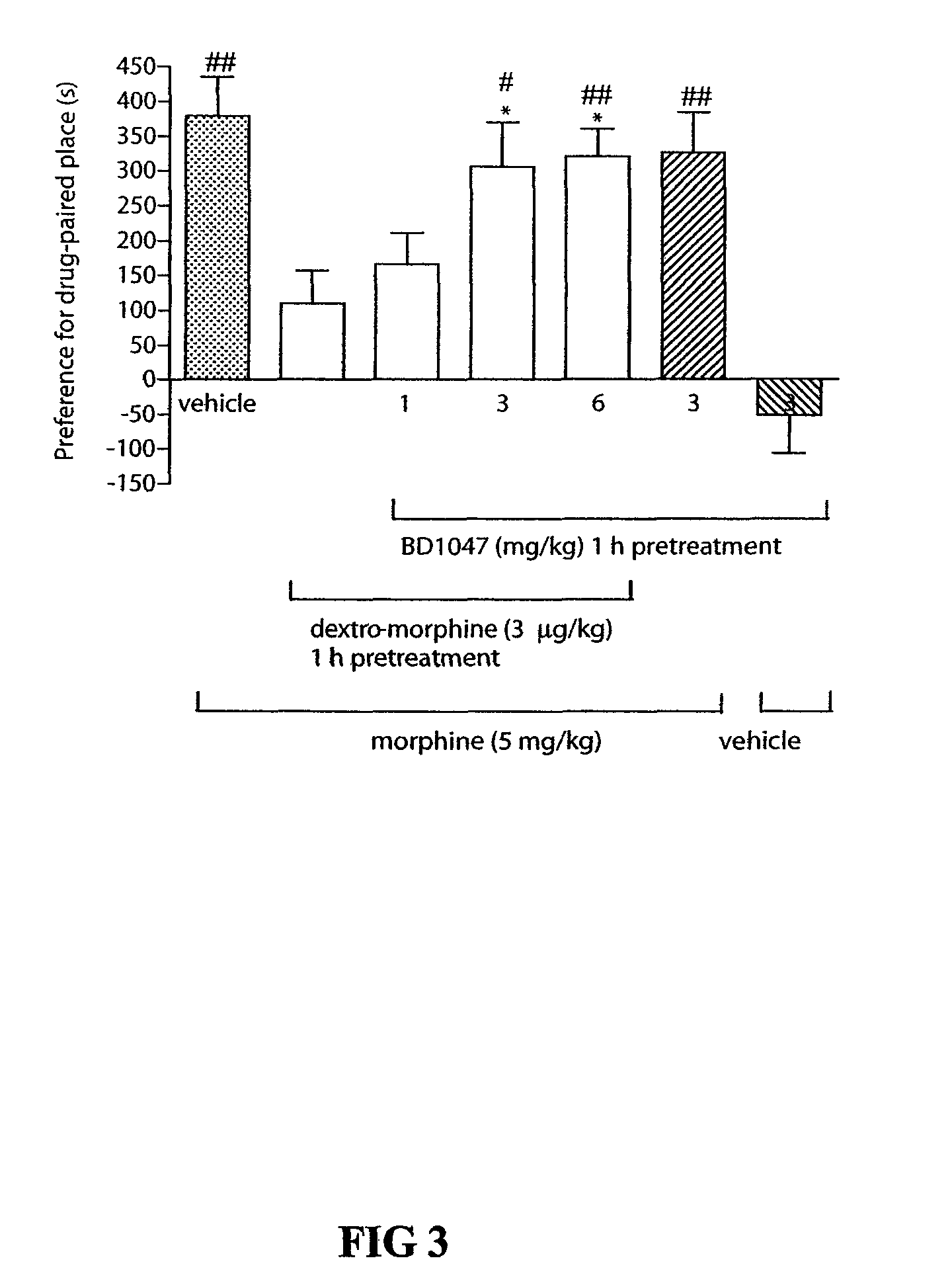Method of treating drug addiction using dextro-morphine
a dextromorphine and drug addiction technology, applied in the direction of biocide, drug composition, peptide/protein ingredients, etc., can solve the problems of physical dependency, permanent damage to the cardiopulmonary system and the central nervous system, and death of unhealthy individuals
- Summary
- Abstract
- Description
- Claims
- Application Information
AI Technical Summary
Benefits of technology
Problems solved by technology
Method used
Image
Examples
example 1
Effect of (−)-morphine Sulfate Given Subcutaneously on the Production of the Conditioned Place Preference (CPP)
[0090]Groups of rats were injected subcutaneously with different doses of (−)-morphine sulfate (1, 5 or 10 mg / kg) or saline vehicle and placed in the CPP box immediately for place conditioning. (−)-Morphine sulfate at a dose, 1 and 5 mg / kg, dose-dependently produced CPP. However, (−)-morphine sulfate at a higher dose, 10 mg / kg, produced no more increase of the CPP. Subcutaneous injection of the vehicle did not affect the baseline place conditioning response (FIG. 1). Five mg / kg of (−)-morphine sulfate was then chosen for the experiments described in Examples 2 and 3 below.
example 2
Effects of (+)-morphine Given Intraperitoneally on the CPP Produced by (−)-morphine Sulfate Given Subcutaneously
[0091]Groups of rats were pretreated intraperitoneally in the home cage with different doses (0.1-100 μg / kg) of (+)-morphine or saline vehicle for 1 h before subcutaneously injection of (−)-morphine sulfate (5 mg / kg) and were placed in the CPP box for place conditioning. Pretreatment with (+)-morphine at a dose from 0.1 to 3 μg / kg dose-dependently attenuated the (−)-morphine-produced CPP. However, (+)-morphine at a higher dose 100 μg / kg did not attenuate the (−)-morphine-produced CPP (FIG. 2). Thus, (+)-morphine at a dose range from 0.1 to 100 μg / kg produced a U-shaped dose-response curve with a maximal inhibition at 3 μg / kg for attenuating the morphine-produced CPP. Pretreatment with (+)-morphine (3 μg / kg) given intraperitoneally alone did not affect the baseline place conditioning in rats treated subcutaneously with saline vehicle (FIG. 2).
example 3
Effects of Sigma Receptor Antagonist BD1047 Given Intraperitoneally on the Attenuation of (−)-morphine-produced CPP Induced by (+)-morphine
[0092]Since most (+)-opiates such as (+)-pentazocine and (+)-N-allyl-normetazocine interact stereospecifically with the sigma-1 receptors, the possibility that the sigma-1 receptors are involved in the (+)-morphine-induced anti-CPP was then explored. The sigma-1 receptor antagonist BD1047 was used to determine if the blockade of the sigma-1 receptors by BD1047 pretreatment would reverse the attenuation of the morphine-produced CPP induced by (+)-morphine. Groups of rats were pretreated intraperitoneally in the home cage with a dose 1, 3 or 6 mg / kg of BD1047 and 3 μg / kg of (+)-morphine for 1 h before subcutaneously injection of morphine sulfate (5 mg / kg) and were place in the CPP box for place conditioning. Pretreatment with BD1047 dose-dependently reversed the attenuation of the morphine-produced CPP produced by morphine (FIG. 3). Pretreatment wi...
PUM
| Property | Measurement | Unit |
|---|---|---|
| diameter | aaaaa | aaaaa |
| diameter | aaaaa | aaaaa |
| time | aaaaa | aaaaa |
Abstract
Description
Claims
Application Information
 Login to View More
Login to View More - R&D
- Intellectual Property
- Life Sciences
- Materials
- Tech Scout
- Unparalleled Data Quality
- Higher Quality Content
- 60% Fewer Hallucinations
Browse by: Latest US Patents, China's latest patents, Technical Efficacy Thesaurus, Application Domain, Technology Topic, Popular Technical Reports.
© 2025 PatSnap. All rights reserved.Legal|Privacy policy|Modern Slavery Act Transparency Statement|Sitemap|About US| Contact US: help@patsnap.com



